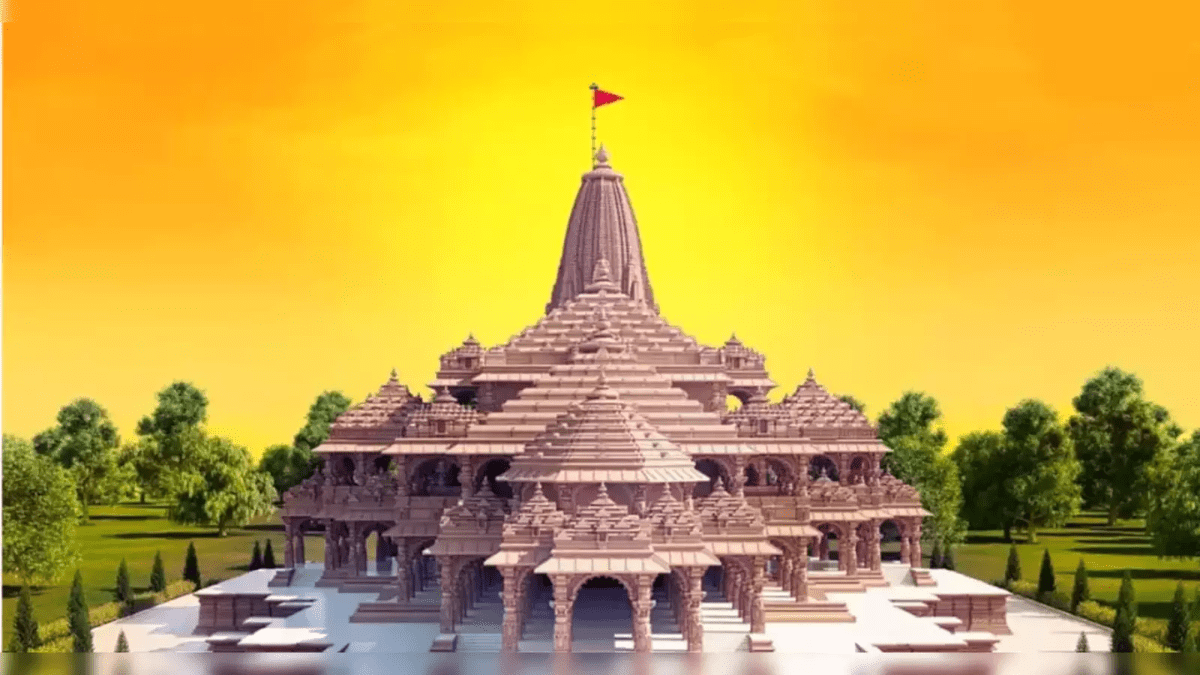Ram Mandir Inauguration: Bharat and its tryst with Sanatan Dharma
The Ram Mandir Inauguration marks a significant milestone in the rich cultural history of India. The construction of the Ram Mandir not only symbolizes the religious sentiments associated with Bhagwan Ram, but also represents the enduring legacy of Sanatan Dharma. Throughout history, Sanatan Dharma has played a pivotal role in shaping the social, educational, and scientific fabric of Bharat. From ancient contributions like the concept of zero and the decimal system to advancements in astronomy, Indian scholars have exemplified the harmonious integration of faith and intellectual pursuits. This deep-rooted connection between religion and progress has been a defining characteristic of Bharat’s development over the centuries.
On January 22, 2024, in a momentous religious event, Prime Minister Sh. Narendra Modi inaugurated Ram Mandir in Ayodhya. The pran pratishtha of Ram Lalla has not only signified a significant spiritual milestone but is also poised to have a substantial economic impact.
The $10 billion transformation, encompassing a new airport, revamped railway station, township, improved road connectivity, and more, is expected to generate a multiplier effect in and around Ayodhya. This comprehensive makeover aims to attract a significant influx of tourists, with projections exceeding 50 million annually, setting a potential precedent for infrastructure-driven growth in India’s tourism sector. The economic implications are substantial, with tourism expected to surge alongside increased economic and religious migration to Ayodhya.
Various sectors, including hotels, airlines, hospitality, FMCG, travel ancillaries, and cement, stand to benefit.
This will not be first time when India has been benefited by the religious advancements. India, with its rich and diverse religious tapestry, has indeed witnessed several instances where religion, or Santan Dharma, has played a pivotal role in shaping its history and contributing to societal well-being.
Here are some historical facts that highlight the positive impact of religion on India’s development over the centuries:
The super-power of education
Ancient educational centers like Nalanda and Takshashila, where students from various parts of the world came to study, was deeply rooted in India’s religious and philosophical traditions. These institutions were not only centers of learning but also promoted cultural exchanges, contributing to the intellectual development of the region.
Architectural Marvels
The construction of magnificent temples and sculptures across India reflects the religious devotion and architectural brilliance of Indian people. These structures not only served as places of worship but also as centers of art, culture, and community gatherings, fostering a sense of unity and pride. Some of the famous architectural marvels of ancient Hindu temples are: Konark Sun Temple, Khajuraho Temple, Brihadeeswarar Temple, Dilwara Temple and many more to name.
Spread of Knowledge through Scriptures
India’s ancient scriptures, including the Vedas, Upanishads, and Puranas, have been instrumental in preserving and disseminating knowledge across generations. The emphasis on education, ethics, and philosophy in these texts has contributed to the moral and intellectual development of the society.
Empowerment of Women
Santan Dharma has not only respected women but Hindus are devotee of womanhood in every aspect of life. We proudly pray woman as source of knowledge, energy, wealth and power. Hindu scriptures, including the Vedas, Upanishads, and Puranas, highlight the importance of women and their roles. Women are portrayed as nurturers, educators, and sources of inspiration. The presence of goddesses and strong female characters in epics like the Ramayana and Mahabharata further emphasizes their significance. The concept of Ardhanarishvara, representing the androgynous form of Shiva and Parvati, signifies the inseparable nature of masculine and feminine aspects in the divine.
Social Welfare Initiatives
Religious institutions in India have a long history of engaging in philanthropy and social welfare. Dharmashastras (ancient legal texts) outlined principles for governance and societal well-being. Temples often served as centers for not only religious activities but also as providers of healthcare, education, and other essential services.
Development of Sciences and Mathematics
Ancient Indian mathematicians and scientists made significant contributions that were often intertwined with religious and philosophical pursuits. The concept of zero, the decimal system, and advancements in astronomy were areas where Indian scholars excelled, driven by a quest for understanding the cosmos within the framework of their respective faiths.
These historical examples illustrate how religion in India, through its various manifestations, has contributed positively to education, architecture, social welfare, cultural diversity, and scientific pursuits, ultimately playing a role in the country’s development over thousands of years. This also illustrates, Bharat’s tryst with Sanatan Dharma is a tale of continuity, diversity, and spiritual exploration. The interwoven nature of the cultural and religious tapestry of the land reflects the profound impact of Sanatan Dharma on the identity and ethos of Bharat over millennia.

